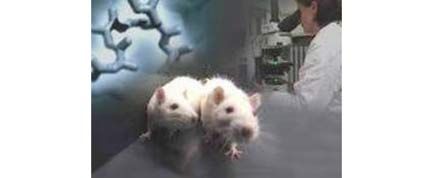
Scientists have some lab mice seeing red. The animals had their vision genetically upgraded and can now see colors normally invisible to rodents.
The finding, detailed in the March 23 issue of the journal Science, has implications for the evolution of full-color, or “trichromatic,” vision in our own ancestors.
“What we are now looking at in these mice is the same evolutionary event that happened in one of the distant ancestors of all primates,” said study team member Jeremy Nathans of Johns Hopkins University.
Dichromats and color-blindness
Most mammals, mice included, have dichromatic vision. They see the world in shades of grey and a few other colors because they only have two types of light-sensitive molecules, called “photopigments,” in their eyes. A genetic mutation in primates 40 million years ago endowed our early ancestors with a third photopigment sensitive to red light, vastly expanding the color palettes of their eyes.
Our brains “see” colors by comparing the responses to light from different photopigments in the eyes. Humans and a few other primates have three photopigments—sensitive to blue, green and red—that together can reproduce all the colors of the rainbow. Having only two photopigments means some colors are off-limits. Some color-blind humans, for example, are dichromats, and to them, the colors red, orange, yellow, and green appear identical.
Rose-colored genetics
Sign up for the Live Science daily newsletter now
Get the world’s most fascinating discoveries delivered straight to your inbox.
In the study, the researchers used genetic engineering to introduce a snippet of DNA that encodes instructions for how to make the red photopigment into the mice’s genome. They then tested whether the mice could discriminate between two different colored lights.
The animals were presented with three light panels. Two panels were bluish-green, while the third was orange. The mice received a drop of soymilk as a reward when they correctly identified the orange panel.
It took the genetically altered mice 10,000 trials to learn the distinction, but once they did, they chose the correct panel 80 percent of the time. Normal mice, in contrast, chose correctly only one third of the time, the expected score if they were guessing randomly among the three panels.
The findings testify to the remarkable flexibility of the mammalian brain, since the mice learned to distinguish colors their brains had never evolved to see.
It also suggests full-color vision conferred an almost immediate benefit to our primate ancestors.
“It’s been unclear whether the simple addition of a photopigment is sufficient to yield a new dimension of color vision, or whether you might need, in addition, some changes in the nervous system,” said study leader Gerald Jacobs of the University of California, Santa Barbara.
Some scientists have proposed that evolution of trichromatic vision allowed primates to discriminate between unripe fruit, which is typically green, and ripe red- and orange-colored fruits.
- Cell Transplants Restore Vision in Mice
- Nanotech Restores Vision in Hamsters
- Life's Little Mysteries - What is 20/20 Vision?
- First Picture of Living Human Retina Reveals Surprise
- Eye Transmits to Brain at Ethernet Speed












